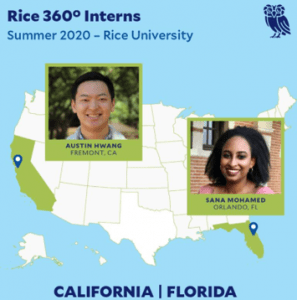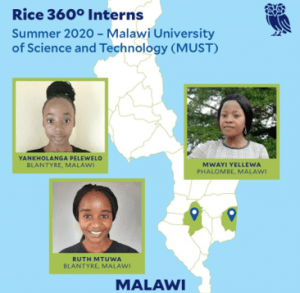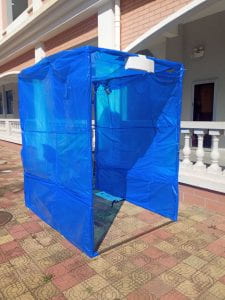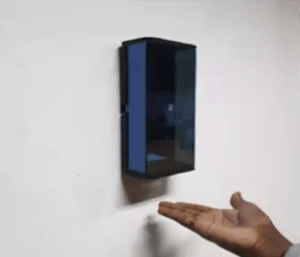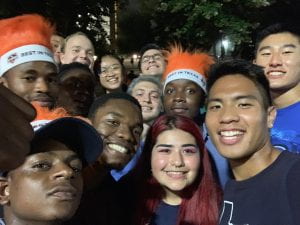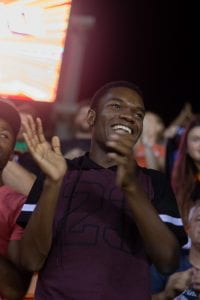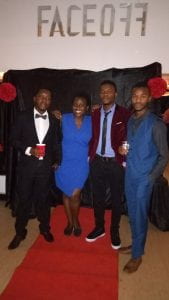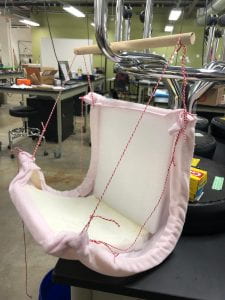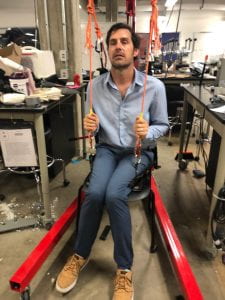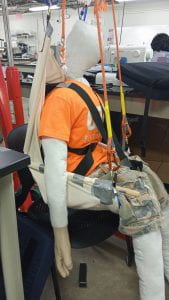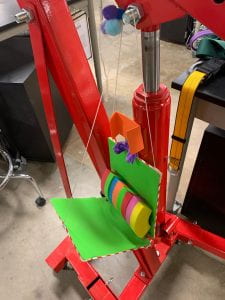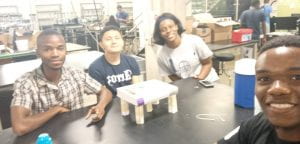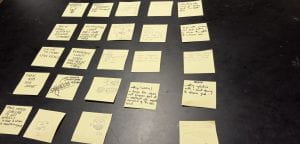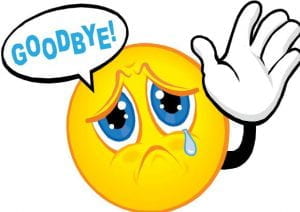My name is Andrew Abikhaled and I am an intern from Rice. I am a Neuroscience major on the Premed track minoring in Global Health Technologies, Business, and (probably) Biochemistry & Cell Biology. I am very energetic, and I love doing anything outside. I also love to run and am on the Cross Country and Track & Field Teams at Rice.
Okay so enough about me and more about the internship experience:
I came into the internship excited yet nervous. I could not wait to meet my team. I knew that meeting them on Zoom was not going to be quite as special as meeting them in person, but that didn’t change the fact that we were going to spend 6 weeks working toward the same common goal. I was also looking forward to doing something productive that I felt would actually mean something in the grand scheme of the coronavirus pandemic. However, I was still a bit apprehensive. Due to the circumstances, my teammates and I would not be spending hours a day at the sign studio, but rather hours a day in front of our computers. Like I mentioned above, I am a very energetic person, so that did not sound very enticing. Secondly, I had convinced myself that I was not going to be as valuable of a team member as some of my peers because I am not an engineer. Reality rarely mimics expectations, and the first week of the internship proved this once again.
Meeting my teammates on Zoom the first day was difficult due to connection issues. However, after the first day’s workshop, we all met on a WhatApp call. Less than a week later I can already tell that this is going to be a great couple of weeks. My teammates are engaging, fun, funny, kind, and very intelligent. After we get our work done for the day in our group meetings, we do a video chat to get to know each other better and talk about our lives. Each one of my teammates is interesting and unique, and we have a host of different experiences that we share with each other. I couldn’t have asked for a better team.
My initial reaction when the Rice 360 internship got cancelled was that I was no longer going to be able to really make a difference (pardon the cliche) this summer. Hope was restored when I learned that the internship was going virtual, but I asked myself, “How much of a difference can I really make from behind a computer screen?” The evidence from the first week of this internship: quite a lot actually. With all that is going on in our world right now, it is an amazing experience to connect with people of all different backgrounds and areas of study to tackle a pandemic that is affecting each and every one of us. I no longer feel like a bystander who is watching this whole thing happen, but rather an active participant who is trying to mitigate the effects.
Zoom can be a blessing and a curse. While it is difficult to interact in the same way that one normally would in person, Zoom also allows me to stand up, stretch, and do jumping jacks during workshops and meetings. This would not normally be socially acceptable, but nobody can see me so I think I’m off the hook. It’s also a good thing that the workshops are extremely engaging and interactive. The Rice 360 Education Team has done an incredible job of making sure that we learn from the resources available to us through these interactive sessions. There are still times when I have to get out some energy, but that allows me to continue to focus on the task at hand and makes sitting in front of the computer just a little better. I just hope I don’t accidentally leave my camera on one of these days.
Going into the internship, I doubted my ability to contribute to a team as much as others. I mean, the word “engineering” is 50% of the phrase “engineering design.” My teammates are intimidatingly smart. They are studying bioengineering, computer science/engineering, materials engineering, electronics, and many other things that I could not begin to understand. That being said, I still feel like I contribute my fair share to the group. I am able to provide a non-engineering perspective and think creatively to solve the problems in front of us. It has yet to be seen if I become less useful later on in the internship, but I am committed to not letting that happen. My teammates also have made my opinion feel valued, so I am confident that my area of study does not take away from my contribution nor will it as the internship moves on.
This is going to be a great few weeks. The people? Incredible. The projects? Impactful. The workshops? Engaging.
I can’t wait for what the next few weeks hold.
